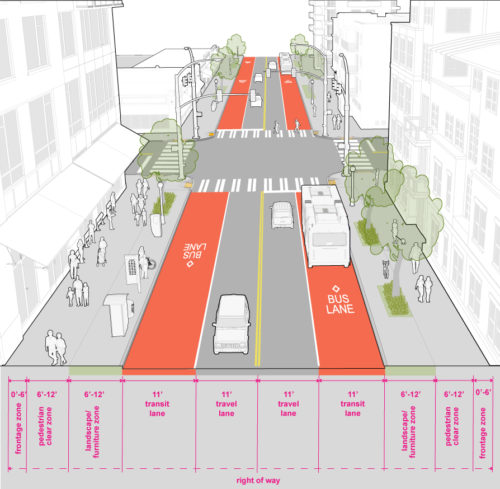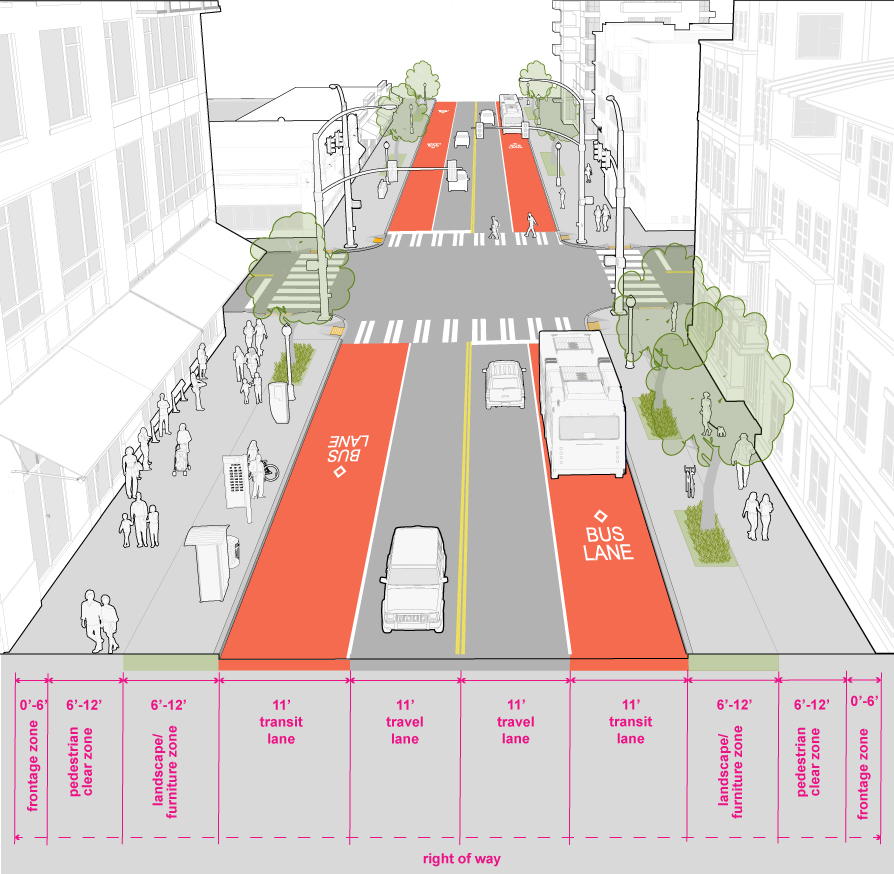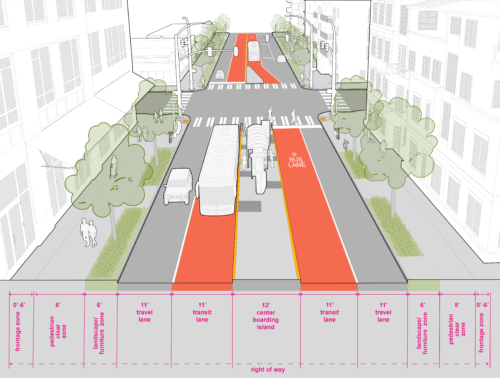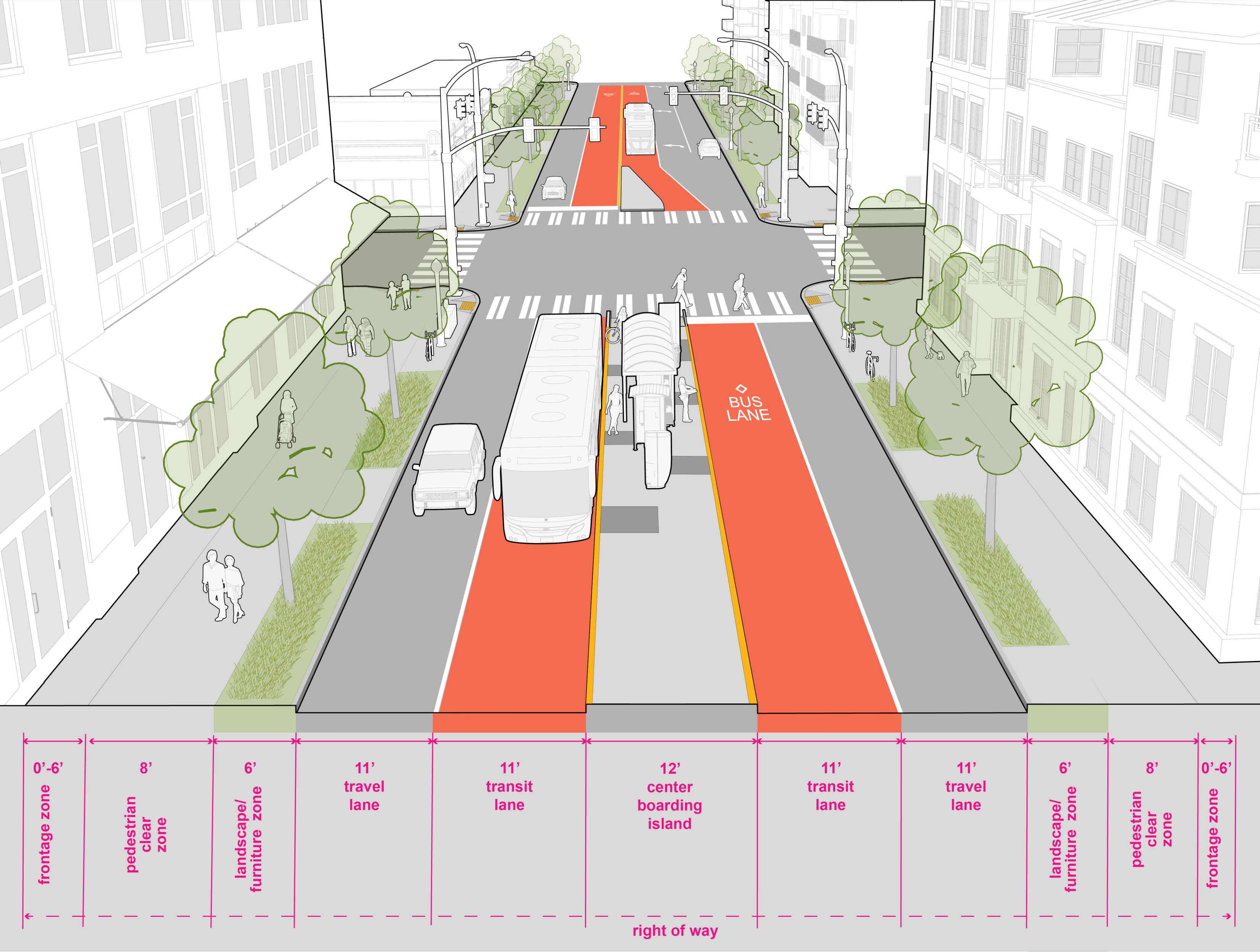2.11 Urban Center Connector
Urban Center Connector Streets are those streets identified as part of the Freight Network (Major truck streets) and the Frequent Transit Network linking Urban Centers and Villages where a high level of public and private investment in pedestrian and transit infrastructure is anticipated to support high quality, reliable transit service.
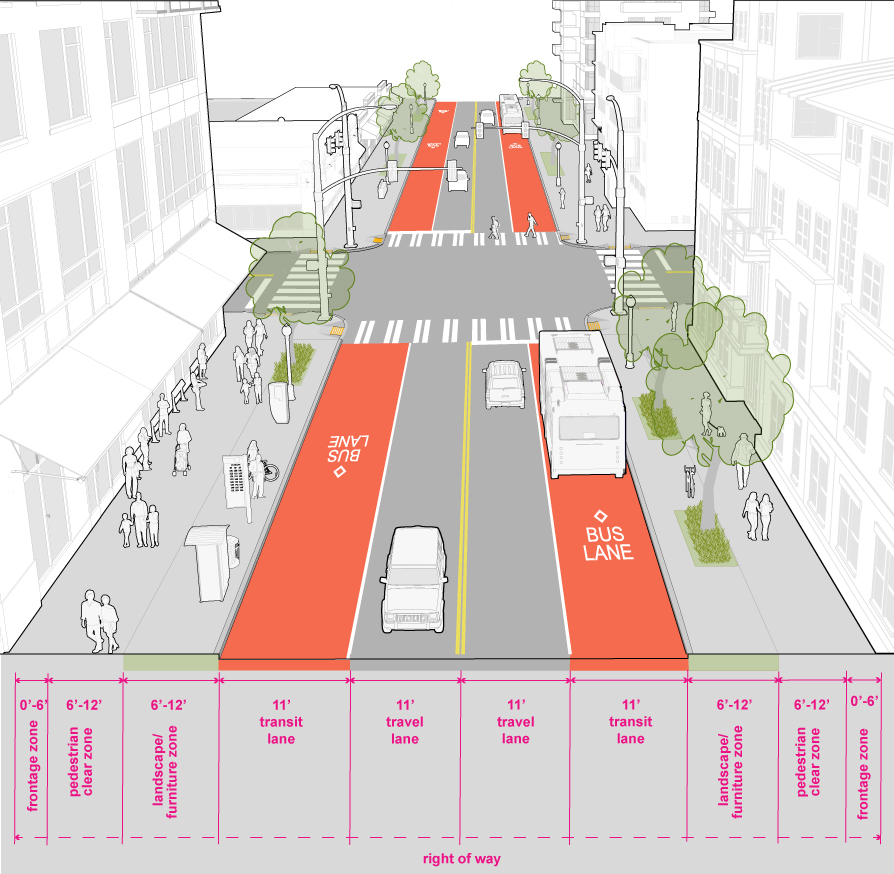
3.2 Sidewalks
Wide sidewalks accommodate large numbers of pedestrians on blocks with transit stops. Read More »
3.11 Freight
Streets must be wide enough for trucks and buses without compromising pedestrian and bike safety. Read More »
3.9 Intersections
Shorter traffic signal cycle lengths (ideally less than 60 seconds) and longer walk intervals provide better service to pedestrians and encourage signal compliance, which improves safety. Read More »
3.10 Transit
The City’s limited transit resources will be focused on the development of the FTN (Frequent Transit Network) that will provide top-quality bus and rail mode services, connecting residents and workers to the regional transit system via transportation centers that are well-integrated with urban village life. Read More »
Geometric design of Urban Center Connector Streets must take into account the needs of larger vehicles while prioritizing pedestrian safety, and providing safer and comfortable bicycle accommodations, where feasible. Signal timing, signal phasing and other traffic operations should be optimized for emergency response and transit. Center-running transit lanes are preferred to decrease conflicts between transit and other traffic.
Transit Corridors may have overhead electrical wires for powering transit vehicles. In order to minimize visual clutter of the streetscape, optimize emergency response with fire truck ladders and reduce costs these wires, consider tying into adjacent buildings rather than supported by individual poles placed in the right-of-way.
|
Typical Street Classification(s) |
|
|
Public Space Programming |
Public Plaza Activation, Public Art, Wayfinding. |
|
Greening |
Street trees, permeable pavement for sidewalks, landscaping. |
|
Pedestrian |
On Frequent Transit Network (FTN) blocks, wider sidewalks (8-12’) are critical to serve high volumes of transit riders. Minimize curb cuts and driveways to maximize pedestrian safety by reducing conflict points (See Seattle Land Use Code Section F for more information on curb cuts and driveways). Pedestrian scaled lighting may be appropriate for some urban center connector streets. |
|
Bicycle |
Urban Center Connector streets serve important connections in the citywide bicycle network. Where there is space to accommodate both reliable transit and planned bicycle facilities conflicts between these two modes should be minimized through geometric separation and signal phasing. In cases where there is insufficient right-of-way to accommodate a protected bike lane, bicycles may be accommodated on a parallel bicycle facility on nearby streets. If it is determined this will not impact transit reliability, bicycle could be allowed to share the dedicated transit lane. |
|
Freight |
Many Urban Center Connector streets also function as freight routes and are provide access for commerce. Transit and freight vehicles have similar needs in terms of lane widths and larger curb radii where there are frequent turning movements. In some cases, where it is determined that freight would not affect transit operations, it may be appropriate for freight to share dedicated transit lanes during off-peak hours. |
|
Transit |
Many Urban Center Connector streets serve as part of the Frequent Transit Network. |
|
Curb Lane/Flex Zone |
Alleys shall serve as the primary loading and parking access needs. Curb space is critical to serve frequent transit service therefore; loading particularly for businesses that require truck load zones may be limited to off peak hours or provided on side streets. |
*Color for illustration is used to differentiate between right-of-way elements and does not represent standard color for design.

